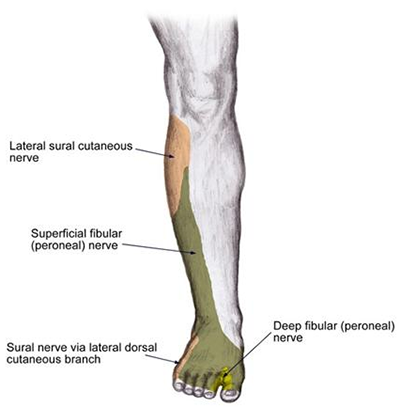


It is enclosed within a synovial sheath and passes through a fibro-osseous tunnel between the medial retinaculum and the lateral tubercles of the talus. The FHL tendon then passes posterior to the talus and deep to the medial retinacular structures at the postero-medial ankle (1,2,6,7). It is pennate in shape and the fibers of the muscle continue and converge on its tendon as it crosses the posterior surface of the lower tibia. It is distal and lateral to the muscle belly of the flexor digitorum longus (FDL), and deep to the soleus and gastrocnemius. The FHL originates from the posterior and distal two thirds of the fibula, the interosseous membrane of the leg and to the intermuscular septa (5). Moreover, it may also suffer damage following injury to the ankle and/or syndesmosis due to its close proximity to the talus and the ankle joint. Injury to the FHL, also known as ‘dancers tendonitis’ is prevalent in classic ballet dancers (1,2).However it happens to athletes in other sports that require repetitive push-off and extreme plantar flexion, such as swimmers, sprinters, footballers, and gymnasts. Its physiological and mechanical properties allow it to act as a powerful convertor of force from the rear foot all the way through to the big toe (1-4). Due to its anatomical arrangement and unique actions, this muscle-tendon unit that can become injured in athletic populations. The flexor hallucis longs (FHL) has been referred to as the ‘Achilles of the foot’ due to its unique role controlling mid foot pronation and supination. Chris Mallac looks at the anatomy and biomechanics of the FHL the pathogenesis of possible injury, and provides detailed rehabilitation suggestions.Ģ009 Andrew Flintoff receives treatment for a foot injury as England take a drinks break Credit: Action Images / Carl RecineLivepic


 0 kommentar(er)
0 kommentar(er)
